Make Your Brand Experiences Interactive
If done correctly, physical and virtual brand experiences can convert prospects into customers and customers into card-carrying brand evangelists. The best experiences are always interactive, encouraging dialog and better yet, an intimate and unforgettable dance between brand and consumer. Here are four thoughts on how to maximize the success of your brand experiences.
Take it to the customer
When our client HSBC wanted to bring their position “The World’s Local Bank” to life in New York City, we developed the HSBC BankCab. An iconic Checker Cab, wrapped in HSBC red and white, drove the streets of New York five days a week, offering free rides to existing customers. Research has shown that customers exposed to the BankCab recommend HSBC to at least five of their friends and are twice as likely to stay loyal to HSBC for years to come.
Execute strategy, not tactics
Effective brand experiences must be borne of relevant strategic insights. Handing out free stuff might drive booth traffic but there’s really no long term impact. At the AST Dew Tour, Panasonic understood the target’s desire to get closer to the athletes. So, Panasonic set up a free camera loaner program that let fans zoom in and record the cool tricks that they saw during the day’s competition. At days end, they got to take home a Panasonic SD card saving all their memories that they could then enter into a photo contest at the complementary online experience – ShareTheAir.net.
Seamlessly integrate event and online experiences
One essential function of an event is to start a conversation that can be continued online long after the day is done. Not only will this defer the high cost-per-touch of the event, but it will also extend the brand experience. For the most impact, the event and the online experiences should be planned at the same time supporting and complimenting each other.
Measure twice, cut once
The goal must be to cut through the first time. To do this, metrics for success must be established upfront. Marketers need to set benchmarks via pre-event research to compare with post-event data. In addition to tracking event attendance, time with brand and perceptual changes, sell-in and sell-through, consider adding Net Promoter Score to your measurement arsenal. Offline line metrics should be compared and tracked to online data including unique visitors, time on site, pre/post NPS and, if relevant, online commerce data.
Drew Neisser is president and CEO of New York-based marketing agency Renegade.































